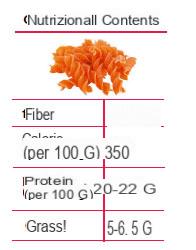Want to fill up on vegetable proteins but you don't have much time to cook? The food technologist Giorgio Donegani has selected for you a series of products to be placed directly in the shopping cart. From vegetable "milks" to vegetarian or vegan burgers to pasta with legumes (vegetable proteins are found in dried vegetables in a proportion of 23%), here's what to choose at the supermarket.
THE SUBSTITUTES OF MILK
There is a wide range of milk replacers available. The various drinks differ greatly in their protein and sugar content. Some, moreover, have a vaguely similar taste to that of cow's milk, others are completely different from it.
Here are the main ones.
Soya milk
The soy "milk" has a protein content almost equivalent to cow's milk: 3 g of protein the first against 3,3 g (per 100 g) of the second; it is ideal for those who are allergic or intolerant to lactose and are looking for a substitute with equivalent properties.
Rice milk
Compared to soy, this rice drink has a less strong taste and exhibits one significantly less protein (0,1 g per 100 g), but has the advantage of not containing gluten: it is therefore perfect for those suffering from celiac disease.
Hazelnut and almond milk
Hazelnut (0,7 protein) and almond (0,8 protein) preparations are practically equivalent in protein terms (values per 100 g). It is more a matter of taste: they are sweeter than other drinks.
Avena's milk
Like other cow's milk substitutes, the drink made from oats contains less protein than cow's milk (0,2 per 100g) but is free of cholesterol. To obtain a softer taste it is added with sunflower oil. However, it maintains a caloric intake lower than that of whole cow's milk (40 versus 62 calories).
Coconut milk
Coconut milk must be distinguished from coconut water, which is the vegetation liquid contained in the fruit. The first, obtained from the pulp of the fruit, has a moderate protein content (2,2 g), an important caloric content (200 calories) and is rich in fat: it should be taken sparingly. Coconut water on the other hand has 20 calories per 100g, 0,1g of protein and a low fat content. For breakfast or frequent use the second option is therefore advisable.
PASTA WITH LEGUMES
Pasta, the most loved food by the villagers, also exists in a version based on 100% legume flour. Rich in flavor, it is less resistant to cooking.
Today you can find on the market 100% pasta produced with legume flour: the offer is wide (beans, lentils, peas, chickpeas...) and you can choose according to your personal taste. The protein content of this category of pasta ranges from 25 g of the lentil type, to 20 g of the bean version to 18 g of the pea version (always per 100 g).
As it does not contain gluten, the pasta has a less elastic consistency and less cooking resistance than traditional pasta. It represents an alternative way of consuming legumes, which can also be appreciated by those who do not particularly love these vegetables.
 How to choose the best products? Take a look at the packaging - you prefer pasta that does not contain crumbs and broken pieces. Moreover, after cooking, it must not flake too much and knead the mouth. On the side you will find the average contents of 100% legume pasta (source: wellnessquad.com).
How to choose the best products? Take a look at the packaging - you prefer pasta that does not contain crumbs and broken pieces. Moreover, after cooking, it must not flake too much and knead the mouth. On the side you will find the average contents of 100% legume pasta (source: wellnessquad.com).
THE VEGETABLE BURGERS
The latest generation of vegetable burgers they sizzle, are succulent and have the classic iron flavor of meat.
It is a real boom: the new vegetable burgers are winning the sympathy of the villagers. The reason? They are incredibly similar to their meat cousins: they give off the unmistakable scent of grilled burgers, and in the mouth they are tasty and succulent.
But what's in these new veggie burgers? Soy, peas, lentils... they are all legume-based products, the richest in protein. Generally, they do not contain preservatives or colorantsi, at the most of soy lecithin as an emulsifier, yeast extracts to “touch up” the flavor, beet extracts to give color and vegetable fibers to improve the consistency.
Furthermore, the legume proteins are treated (in technical terms "spun") to make them fibrous: we speak of "restructured" proteins. They are safe (also approved by the FDA, i.e. the American Food and Drug Administration) and have an amino acid composition equal to the starting proteins. Indeed, in the case of soy, the processing it undergoes eliminates most of the phytoestrogens present.
As for the content of "vegetable blood", as it is defined by experts, it is called leghemoglobin and it is a vegetable protein obtained from turnips and other roots that closely resembles the hemoglobin of our blood and the myoglobin of the muscles. In addition to making the color and appearance of the burgers more realistic, it gives them the typical slightly iron flavor of the meat.
Tasty, “cruelty free”, sustainable for the environment… green light for unbridled consumption? No: moderation, also in this case, is a must: they are generally very high in fat (if they also contain coconut oil, they are largely saturated) and provide quite high amounts of salt.
As good as they are, they must not overshadow other alternatives to meat, more traditional and decidedly natural: the classic meatballs of lentils, beans, chickpeas and lupins, and also seitan, made from wheat which is not surprisingly known as " wheat muscle ".


























